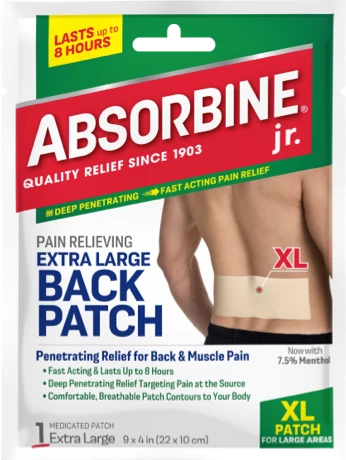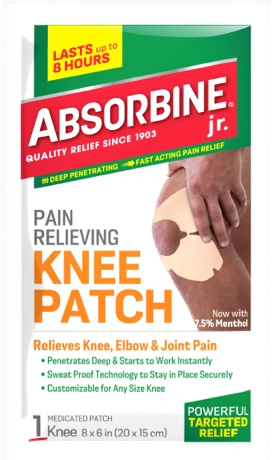How Topical Lidocaine Works, Its Benefits & More
You’ve probably heard of lidocaine pain relief – but have you tried it yet? Don’t wait, because there are many reasons to include topical lidocaine in your medicine cabinet.
Lidocaine is an anesthetic that suppresses nerve responses to stimulation, creating numbness at the application site and preventing pain signals from that area from reaching the brain. It was first approved in the United States in the 1940s and, since then, pain relief with lidocaine has shown a long history of safe and effective use.
Fast-acting and targeted, lidocaine can be applied precisely where you need it — without concerns associated with oral medications, like stomach irritation and drug interactions.
You do not need a prescription to use topical lidocaine and it comes in numerous convenient formulations (like Absorbine Jr. PRO lidocaine cream and lidocaine roll-on), which make accessing its pain-relief benefits easy.
The Benefits of Topical Lidocaine
Potent Pain Relief
Applied to the skin, lidocaine provides localized numbness, blocking pain signals beneath the skin and preventing them from reaching your brain.
Rapid Onset
How long does lidocaine take to work? Depending on the product, topical lidocaine can begin to work almost immediately, within minutes, says the University of Michigan Medical School. Effects then continue to increase over time until the product’s full potency is reached. In one study of topical lidocaine to help prevent the pain of multiple facial injections, significant anesthetic effects kicked in 25-30 minutes after application. Optimum numbing was achieved in 35-40 minutes. In terms of onset, topical lidocaine has an advantage over oral pain medications, which must be swallowed, digested, and distributed throughout the body before they start to take effect.
Long-Lasting, Targeted Pain Reduction
How long does lidocaine last? While it varies from product to product, topical lidocaine pain relief can last about 3 hours, and lidocaine can be reapplied three to four times per day, as needed. Refer to the instructions for the lidocaine you are using for exact dosing instructions and talk to your healthcare provider if you have any questions about how much lidocaine to use. But, since lidocaine t is applied directly to the skin rather than taken orally, you are treating only the area where you need relief, minimizing the impact on the rest of your body.
Reduced Need for Systemic Medications and Lower Risk of Side Effects
By using topical lidocaine for pain relief, many people can reduce their reliance on oral pain medications (like acetaminophen, ibuprofen, and naproxen). This can lower the risk of oral medications’ side effects, such as stomach irritation. But, if you need more pain relief, lidocaine can be safely used alongside oral pain relievers without interaction risks.
Versatility
Topical lidocaine comes in various forms — lidocaine cream, lidocaine roll-on, patches, and gels — making it suitable for many body areas, pain types, and personal preferences. Absorbine Jr. PRO cream and roll-on, for example, are often used to alleviate sore muscles and joints, sprains, strains, backaches, bruises, cramps, arthritis, and foot pain. Just avoid application near the eyes, on sensitive, broken or irritated skin, and to mucous membranes (like in the mouth and nose).
Easy to Use
Topical lidocaine is convenient for everyday use and readily available at local pharmacies, supermarkets, and online retailers. You can take it with you on the go and reapply as needed, often three to four times a day, as directed.
A Recommended Option for Special Groups
Because topical lidocaine is proven to be safe, it’s often a preferred choice for specific groups, including older adults who may be taking multiple oral medications and are concerned about drug interactions, and individuals who are pregnant or breastfeeding.

Is topical lidocaine safe during pregnancy?
According to the American College of Obstetricians and Gynecologists, lidocaine pain relief is safe during pregnancy, and the UK’s National Health Service concurs, noting that pain relief cream with lidocaine can be used during pregnancy and breastfeeding (as long as it is not applied near the nipples). However, it’s always wise to consult your doctor about any medications or supplements you plan to take during this time.
Ultimately, the type of therapy you choose should depend on the cause of your pain and your doctor’s recommendations. Discuss with your healthcare provider whether an oral analgesic, a topical anesthetic like Absorbine Jr. PRO, or a combination of both might be best for you.
Learn more about Absorbine Jr. PRO or buy now.
Use as Directed.






